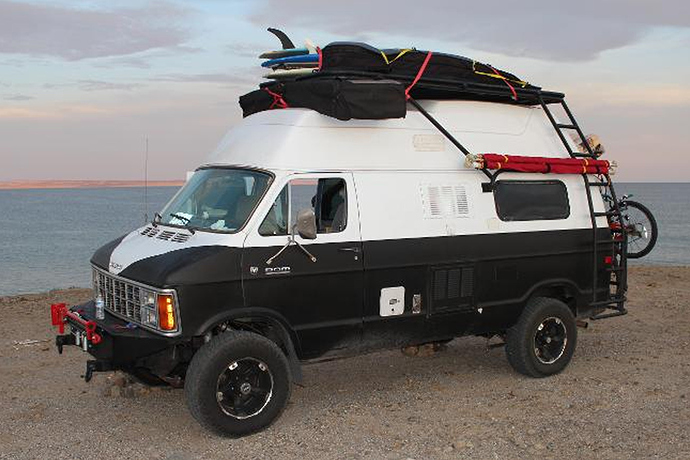I am thinking that I remember @SteveUnruh mentioning that the Triton series of engines, e.g. The Ford V10, had some inherent silliness about them that made woodgassing troublesome, but I don’t remember what or how troublesome.
Plastic intake motors ar not good canidates,unless you can get metal replacements,or plentums.
This is currently what I’m looking at- 1995ish Dodge Ram 3500 Vans with the 5.2 or 5.9 Magnum v8:
Full size:
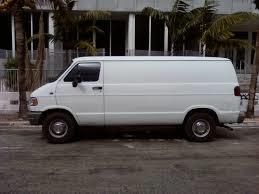
Extended would be great for more room, but the rear already sticks out quite a bit and with a gasifier mounted on a modified bumper, that might be too much:
Then to “camperize” it, I could do the Sportsmobile penthouse pop-top, which would be great for keeping a low profile when driving:
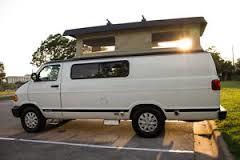
Or I could go for a fixed hi-top, which gives more permanent space but increases wind drag:
I do love the look of this last one with a lift, 4wd, and the high top. And I definitely want it to be a 4x4 as I need that regularly throughout the year for camping (not rock crawling, but handling occasional mud and steep inclines). I had a thought that with a roof rack on top of the hi top, I could extend the hopper of the gasifier to be taller than normal for extended range, and refilled easily from the roof. Hard part would just be hauling the wood up there in the first place.
Lastly, this is the general idea I have for mounting it to the rear of the vehicle, inspired by a Swedish fellow who gasified a Chevy van: (check out the van running on YouTube:
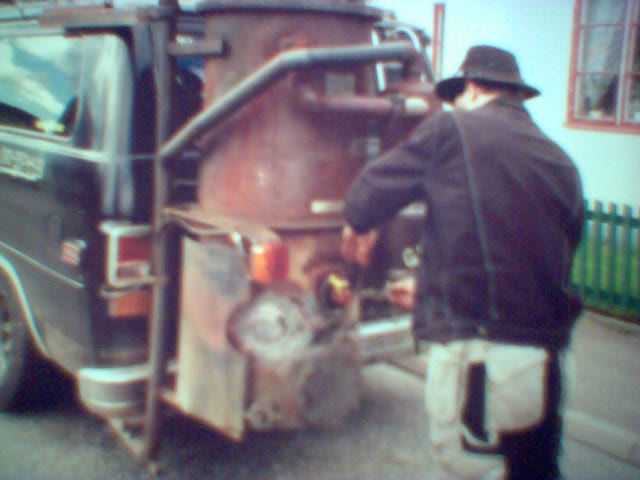
Thank you for reading my wide-eyed newbie ideas and offering both encouragement and reality checks where needed 
Hey WesT, I’d suggest focussing on your # 4 shown option. Go UP for your interior usabilty. Short rear overhang for the rear gasifier mounting. Your “sweedish” guy kinnda looks like Stigg-Eric Werner?? Maybe not. His systems are more compact with front of van mounted gas coolers.
He has his own site . . . Someone link this please.
Chris Seymours friends Ford Van was a single overhead cammed Ford “modular” Ford V-8 SEFI no-distributor system.
He says this worked fine on his water vapor improved charcoal system fuel gas.
The Ford V-10 is the same engine system; add two more cylinders.
He is the only one yet claiming gasier feeding this Ford system??
An actual raw wood fuel gas system will have much more tendencies to at starting up cold, and poorly operated make valve sticking tars.
Why we shy away from recommending these overhead cam engine types for a beginner.
And off vehicle charcoal fuel making, bagging, storage is a whole additional “farm” chore process to then have to set up for and manage.
OK now. Show us some of your small systems works to convince us you are not that beginner.
What you want to do now is a 10K ($'s, hours) major commitment step up.
Sure you’d not be better first converting a tractor for your farm as an intermediate experience step?
Regards
Steve Unruh
Yep, that’s him. www.gengas.se
Excellent points Steve, thank you for taking the time to respond and offer your insights. I’m leaning towards #4 as well, it’s less living space but better for wood gas and as a daily driver. I wonder if I should consider the 2500 or just the 3500.
I am admittedly a beginner- not a car guy (yet) but looking to learn a lot, take things slowly and methodically, and treat it all as a learning experience in engines, vehicles, fabrication, and renewable energy applications. I have the experience of building the small gasifier shown above with my friend who will likely appear on these forums soon once he has the time. He did the welding, I shared in the grinding, drilling, painting, cutting, and was involved with the design and troubleshooting from start to finish. So yes, a newbie by any measure, but with a few firm steps forward.
Professionally I work as a web designer/SEO specialist and permaculture landscaper, and before that the video game industry. The “farm” I live on is a small 3.5 acre eco-viliage, so I’m not a true farmer like Wayne. Our gardens are for food security and demonstrating eco-friendly landscaping and permaculture-based site design. Most of the punches in my man card have only happened in the last 5 years or so 
With this van build, I am in no rush, and I plan on doing it over the next 2 years or so, or as long as it takes to do it right. I do not have the van yet as I’m waiting on some money to come in, and I wanted to reach out early in the conceptual stages so that I chose the right vehicle to begin with (engine, computer, size, all those considerations y’all have helped with immensely already). My friend also wants to convert his 60’s International school bus to DOW, so that might be happening here at my place before I dig into my own system. Based on what I’ve heard, he may end up having to mix “dino-juice” with wood gas or scale things up a bit since his rig is huge and heavy.
I have to agree with Bill, this community is incredibly supportive and about as good as it gets. It really is a pleasure connecting with everyone and I have the utmost respect for all of y’all for being such open and welcoming pioneers of this awesome technology.
FYI we’ve already shown off our gasifier at 3 different events in Austin, TX (where I’m based) and North Carolina. Even with our very basic system, people get hugely excited about the potential. I’ll make sure to share DriveonWood.com in pretty much every interaction I have in the future around wood gas so that people know a great community exists for those who want to build one themselves.
You will with a heavy van too. With the Dodge van (probably the best fuel injection system for this) I’d go with the 360.
The number that usually gets thrown around is roughly 16 pounds of wood to one gallon. I would guess the van your looking at to be in the 9-10 mpg range. Do the math. Look hard at your wood source, processing, storing and transporting the volume of wood you’ll need for your intended use.
Welcome, Wesley. I live about ten miles from Cedar Creek, in Lytton Springs. I have a charcoal gasifier(s), and seem to spend most of my time making charcoal from Junk Wood. A neighbor (Charley) has BOB (Big Orange Bus) that looks something like your friend is thinking about converting to woodgas. Sounds like a hybrid mode would be the way to go with something that large and heavy, and would certainly improve the fuel mileage.
I’m retired, and most always home, and if you feel like talking gasifiers, charcoal, biochar, or TLUD stoves, wander over this way. Ray
Ha! Ha! My bad WesleyW, I had not read back up and seen your pictured small unit you’d put up. I was actually responding to BrianWA linking on my name.
On your small unit you’ve already seen a performance differnece changing from pine to oak pellets. That’s a good observation.
Now search up Doug Breathowers work here with charcoal converted wood pellets.
Most would tell you to deep-six out of the FEMA clone. Not yet more to learn. Try shipping pallet chunked up wood(S) first. Then try these as pre-burnt “torrified”. This is how Mr Wayne says he got his at first FEMA based unit to be workable enough to travel with.
If not too offensive to the wanna’ sweat-it mini-gardeners look at Gary Gillmores charcoal fueled Simplifer made up and TROY-Built or Arien garden tractor mounted as a useable experience getter unit to put to work. Then be a “Small Is Beautiful” E. F. Schumacher organic fueled power unit.
Before you would actually engine fuel gas suck your current set-up you will want to metallic silver aluminum duct tape up that exhaust flex piping being used. It WILL under engine suction allow suck in air uncontrollable mixing with your fuel gases.
No problem you being new-millennium electronics comfortable. Now you’ve no excuses to really dig in and make EFI systems really sing your own tune.
Regards
Steve Unruh
Wesleyt, boy, have I got a deal for you -: You say that you want a Dodge van. Dodge made 318 vans in both CNG and propane. The propane van, at least had a distributer with 2 pickups. I suspect that it would choose advance based on fuel. My impression of the OBDI system is; the computer runs up the timing until the limit. The OBDII system that I have looked at on Ford V-10s seems to run the advance up MUCH further. It seems to run it up until the knock sensor says, “no mas”. You don’t need to mess with a cable control. At least, that is my impression from investigating.
https://www.allpar.com/mopar/propane.html
if you were to start out with a CNG van, you could do the R&D work to see if the double pickup distributor would switch right to woodgas. https://www.allpar.com/model/ram/CNG.html
Then, we could copy your work. Seriously, I think the dual pickup distributor may be a good substitute for the cable advance. Not sure of the later CNG van has 2 pickups but, it may have a computer that is friendly to wood gas.
Here is a van for real cheap. He forgot to mention that the tanks are expired.
http://sfbay.craigslist.org/eby/cto/5059002934.html
Again, excellent points everyone and I super appreciate the feedback!
Ray- I live in Cedar Creek and would LOVE to come by some time to talk shop! Wow, how awesome is that. Love that bus too- I was considering getting an old International 4x4 short bus like that so that my buddy and I could be modifying similar engines (345/392)
Steve- the duct tape idea is really good. We haven’t seen any smoke coming out of the exhaust tubing but I’d always err on the side of caution.
William- That is quite an interesting idea! If it ends up being a simpler conversion that could be
a big step forward and open up new vistas for ease of entry to driving on wood. I’ll definitely consider it, but being a novice I’m not sure if I’m the best one to blaze new trails. But dang, I always love a challenge and would deeply enjoy helping the cause. I’m curios what others think about this or if anyone has experience with both wood gas and CNG vehicles.
I also want to ask something again for clarity- if I stick to pre-1996 vehicles, and I happen to find a perfect vehicle that happens to be a Ford/Chevy/GMC, how much harder might those be to gasify? I like the Dodge idea the best due to the experience here with them, but pre-95 hitop 4x4 vans are pretty rare, and it’s way more cost efficient for me to find one that has those already (since 4x4 conversion is around $10 grand and tops are $1-$6 grand). This is one I found that spurned this question: http://newyork.craigslist.org/wch/cto/5005813338.html
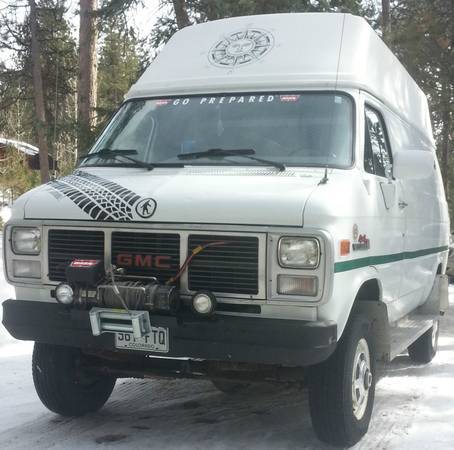
If I see a deal like this one and it’s not a Dodge, do you think it is worth getting? Do I run the risk of non-Dodges being completely unable to be converted, or will it just mean more troubleshooting/money/hassle? I’m definitely feeling Dodge is the best bet, but I’m curious if folks here would say the other makes are doable, or should definitely be avoided.
Thanks much in advance!
Interesting to note that the ad is in New York, but the plates are Colorado and they don’t mention it. Cross state-lines auto sales generally cost a lot more in fees. E.g. my friend once bought a car from Colorado and transferring the title to Washington cost an extra 350$ in the end.
I drive a obd2 dodge dakota, however it still has a distributor on it. It is a 1996 model which is a very crude version of OBD2. The first year of it actually. I can tell you that it runs no differently then a OBD1 model, and maybe even hybrid drives better due to a slightly faster computer, and a returnless fuel system I think? Anyways, I think a lot of these guys have similar outcomes with any of the big 3 brands. As long as its a pushrod type v8 with a distributor they really seem to like breathing woodgas. Being able to advance the timing without any knock sensors limiting you is the key. Milelage however may very. 351, 350, 318, 360 they are all pretty similar engines and will make sufficient power if the vehicle they are pushing down the road isnt too large.
Yes. Don’t get hung up on brands. The main reason we’re using so many Dodges is
a) they made the only light truck with a V8 from the factory.
b) they made the biggest displacement 4x4 (8L v10).
For your application I’m not sure the Dodges have any advantage over the other makes.
If you want a bubble top van, I would suggest you get one that raises up for camping and lowers down for driving. You will loose power from the WG and then if you add a “pod” on top, the wind resistance will really hurt. I used a full 55 gal barrel for my hopper and let it stick up above the cab. One trip and I found it better to stop more often to fill a smaller hopper, I am cutting my barrel down as I type.TomC
You might concider a truck like waynes v10 dually,with a tow behind camper,too have the extra power ,then when you get whare you going you can unload the camper ,and drive around scouting for wood.Wood gasifiers need too be used once built,or they tend too corrode, not sitting like a lot of motor homes end up doing,
Can you teach me to do that? 
Chris- thanks for the clarification!
Tom- I do really like the Sportsmobile penthouse pop tops. One thing I wonder is if I’ll be able to properly mount the gasifier to the rear of the van with the top on there. Notice how the penthouse top goes all the way to the edge of the top of the vehicle:
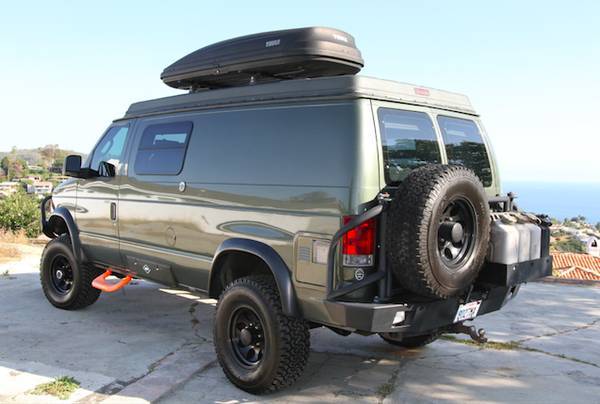
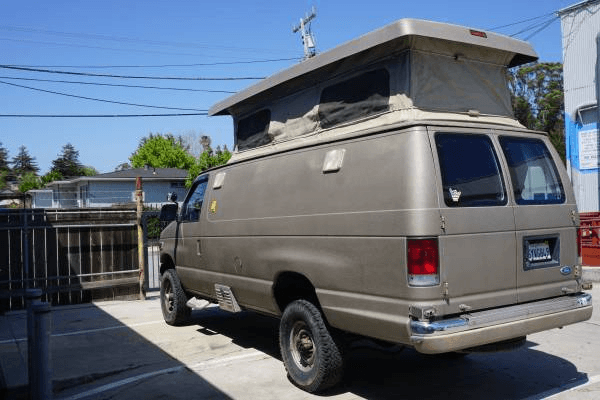
Our Sweedish friend seems to mount the gasifier from above and below:

Any thoughts on how the penthouse top and a van mount could work?
Kevin- I’ve been pondering the v10 route. The thing is, I would much rather have a self-contained unit than pull a camper around. If I did go with a Dakota or v10, I would want a camper top of some kind in the back. The advantage would be a tried and true vehicle, but the camper would increase wind drag, and I’d still have to figure out how to mount the thing on the back of a truck but not on the truck bed. Maybe with the v10 I could get away with more drag, since I’m not towing anything? I wonder if I could still get up to highway speeds comfortable with it. Is that a great idea or a terrible one? 
Here’s a visual example of the truck+camper idea:
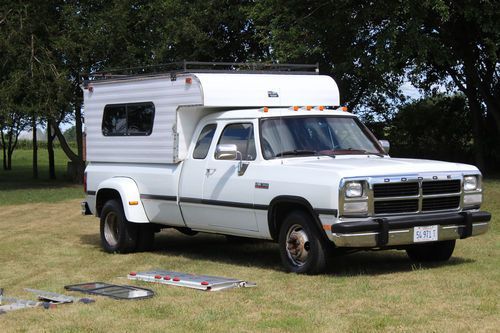
Or one with an extendable top that keeps the profile low while driving:
Mounting on the back of the truck would require some creative thinking because usually the back is the only entrance in and out of the camper.
I was thinking more on the line of a light weight tow behind,due too the camper on the bed limiting the entrance, The more weight and drag that adds up,you might be looking at 3 pounds a mile at 55 MPH,witch would mean you wood need another 900 pounds of wood to go 300 miles,might work fine up too x miles depending on the space too haul ,just another veiw point too estomate,your range wood be limited too space and weight too haul.The dakotas hauling 800 pounds of wood behind is about as good as it gets for the long hauls,even then they seem too like running hybrid,for cooling reasons, most wood gasifiers work good on big road,but then may make tar when slowing down in town, NOT WAYNES THOUGH.
Thanks for your thoughts Kevin. I have to wonder, with such great success that @csseymour had with the charcoal powered van (with a medium-sized hitop AND a trailer), it makes me think a hitop van with the gasifier mounted on the rear would perform even better. Am I missing something? It seems like his van build proved that concept, though I don’t recall how much charcoal that beast ate to zip around.
Additionally on the wood source front, it dawned on me that there is a mulch and tree service company at the entrance to my road, and I can get a yard (around 700lbs) of rough cut mulch for ~$20 with no delivery fee. I’m also thinking about using a stationary wood gasifier+generator system for offgrid electricity and biochar production. That biochar could be sold at local garden stores and used to power a charcoal gasifier vehicle. If the char is already being produced and the energy from its pyrolysis utilized, that takes out the biggest concern of charcoal vs wood, and I could have a lighter and simpler system on the van.
Addicted for life…

